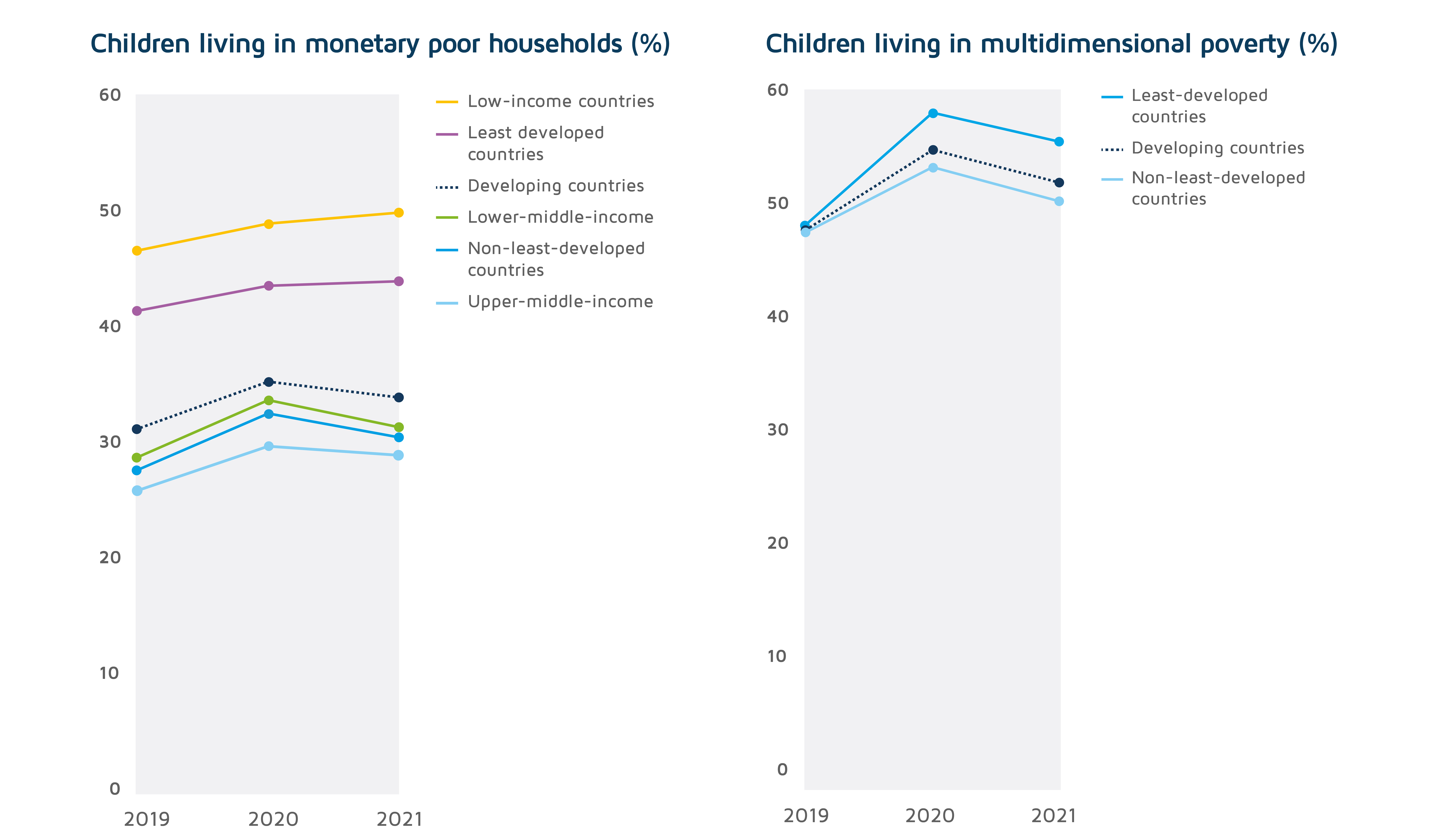The coronavirus pandemic has pushed an extra 100 million children worldwide into multidimensional poverty which represents a 10% increase since 2019, warns the UN Children’s Fund, UNICEF. According to the agency, the most optimistic scenario is that it will take seven to eight years to return to pre-COVID child poverty levels.
According to the report titled “Preventing a lost decade: Urgent action to reverse the devastating impact of COVID-19 on children and young people”, even before the pandemic about 1 billion children globally suffered a minimum of one serious deprivation, lacking access to either food, housing, health, education, sanitation or water. The report says about 60 million more children are currently living in monetary poor households compared to the pre-pandemic period. Furthermore, 23 million children worldwide did not receive essential vaccines in 2020, the highest figure in the last 11 years.
Henrietta Fore, UNICEF Executive Director, noted: “The COVID-19 pandemic has been the biggest threat to progress for children in our 75-year history.”
The number of children suffering from severe undernourishment, the most life-threatening form of malnutrition, has reached 50 million globally and may further increase by an extra 9 million by 2022 amid the impact of the pandemic, the report notes. The number of children living in monetary poor households is expected to continue to grow in low-income countries whereas richer countries are projected to recover more quickly.
Fig.1. Monetary Poverty
Source: UNICEF
Fig.2. Children living in multidimensional poverty (%)

By working together, we can ensure critical investments for an inclusive and resilient COVID-19 recovery.
We can strengthen systems to better prevent, respond to, and protect children from current and future crises. #UNICEF75 https://t.co/tCMVogs896
— Henrietta H. Fore (@unicefchief) December 10, 2021
The figures published by the report reveal that at the peak of the lockdowns, over 1.5 billion students worldwide were unable to attend classes. The mental health of children and youth aged 10-19 has worsened significantly with 13% of adolescents experiencing a deterioration of their mental health state. Developed countries were also strongly affected. For instance, according to a House of Commons Committee report, in England, as a direct consequence of the pandemic, 1.5 million children and young people under 18 currently need mental health support.
Furthermore, according to projections, the pandemic may force up to 10 million more children into marriage before the end of the decade. In addition, the number of children working will reach 160 million globally which represents an 8.4 million increase over the last four years. The pandemic also threatens to push an extra 9 million children into child labor by the end of 2022.
As for other threats beyond the pandemic, the report warns that 1 in 5 children, that is an overall 426 million, live in conflict zones. At the same time, 50% of children worldwide reside in countries faced with an ‘extremely high-risk’ as a result of the impacts of climate change. Talking about the importance of taking action now, Henrietta Fore commented:
“In an era of a global pandemic, growing conflicts, and worsening climate change, never has a child-first approach been more critical than today. We are at a crossroads. As we work with governments, donors, and other organizations to begin charting our collective path for the next 75 years, we must keep children first in line for investment and last in line for cuts. The promise of our future is set in the priorities we make in our present.”
She also tweeted: “By working together, we can ensure critical investments for an inclusive and resilient COVID-19 recovery. We can strengthen systems to better prevent, respond to, and protect children from current and future crises.”

